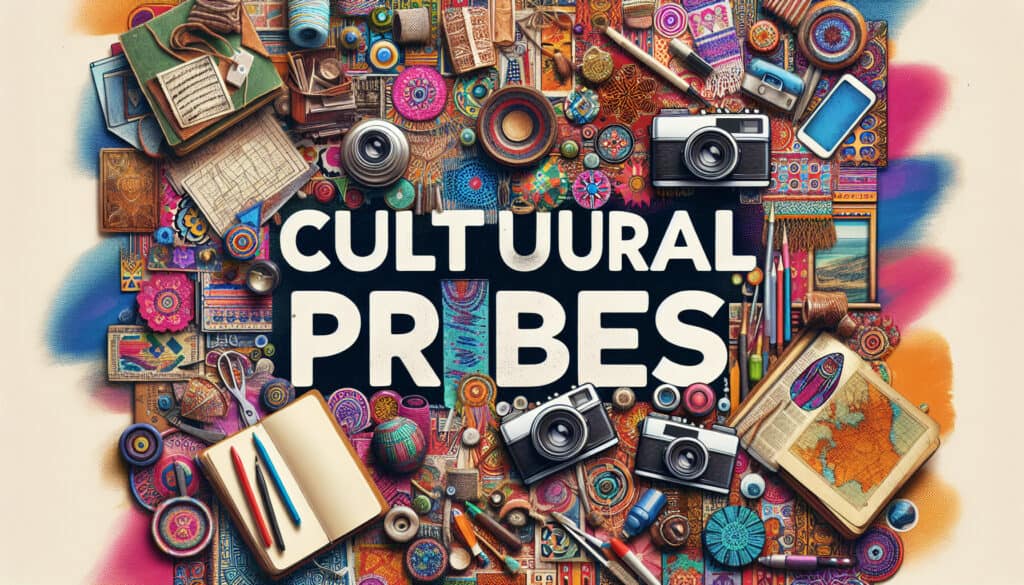A design-led research metodo that uses kits of artifacts (e.g., disposable cameras, diaries, maps) given to participants to inspire responses and gather insights about their lives and cultures.
- Metodologie: Clienti e marketing, Economia
Cultural Probes

Cultural Probes
- Creatività, Processo di progettazione, Pensiero progettuale, Human-Centered Design, Ideazione, Prototipazione, Progettazione incentrata sull'utente
Obiettivo:
Come si usa:
- The probes are left with participants for a period of time for them to self-document their experiences. The returned materials are used as inspiration for the design process, not as objective data.
Professionisti
- Provides inspirational and often surprising insights into users' lives and values; empowers participants to report on their own terms; generates rich, qualitative material that sparks creativity.
Contro
- The data is subjective, fragmented, and not intended for systematic analysis; it's not a method for answering specific questions but for generating inspiration; can be expensive to produce the kits.
Categorie:
- Clienti e marketing, Ideazione, Progettazione del prodotto
Ideale per:
- Gaining empathic and inspirational insights into the lives and contexts of users to inspire the design process.
Cultural Probes typically come into play during the early stages of design projects where understanding the user’s context and emotional landscape is paramount. This methodology has found its footing primarily in fields such as interaction design, user experience research, and service design, where the human factors behind product interaction significantly influence outcomes. Ideal participants for Cultural Probes can include diverse user groups, from everyday consumers to specific segments such as healthcare users or technology adopters. Companies in industries ranging from consumer electronics to urban design frequently employ this methodology, as it surfaces nuanced user behaviors and latent needs that quantitative surveys might overlook. The period during which participants engage with the probes allows them to reflect on their day-to-day experiences, leading to a rich tapestry of qualitative data that can mimic storytelling. This can manifest in various outputs, such as photographs, sketches, or diary entries—all of which provide a contextually embedded view of the user’s life. The low-pressure nature of this self-documentation invites authenticity and enables users to engage with the process on their own terms, yielding materials that can inform design ideation sessions, co-creation workshops, or iterative prototyping. These unique insights can guide project teams to evolve their design parameters based not only on user preferences but also on the deeper cultural and emotional dimensions shaping user interactions with products and services.
Fasi chiave di questa metodologia
- Design and create the probes, ensuring they encourage open-ended responses.
- Distribute probes to selected participants, explaining their purpose and usage.
- Participants engage with probes over a designated period, documenting their experiences and thoughts.
- Collect and analyze the returned materials for themes and patterns.
- Utilize findings from the probes to inform and inspire the design process.
Suggerimenti per i professionisti
- Encourage participants to explore unconventional mediums for documentation, such as audio recordings or drawings, to capture emotions and nuances that words might miss.
- Set specific themes or prompts for each probe to guide participants while still allowing freedom for personal expression, ensuring rich and varied narratives.
- Facilitate a debrief session post-return of materials to elicit deeper discussions and clarify ambiguous content, enriching the contextual understanding of collected materials.
Leggere e confrontare diverse metodologie, raccomandiamo il
> Ampio archivio di metodologie <
insieme ad altre 400 metodologie.
I vostri commenti su questa metodologia o ulteriori informazioni sono benvenuti su sezione commenti qui sotto ↓ , così come tutte le idee o i link relativi all'ingegneria.
Contesto storico
1986
(se la data non è nota o non è rilevante, ad esempio "meccanica dei fluidi", viene fornita una stima approssimativa della sua notevole comparsa)

Post correlati
Gestione delle operazioni di produzione (MOM)
Sistema di esecuzione della produzione (MES)
Piano di controllo della produzione
Test manuali
Schede di valutazione della movimentazione manuale (MAC)
ManTRA (Strumento di valutazione dei rischi delle attività manuali)